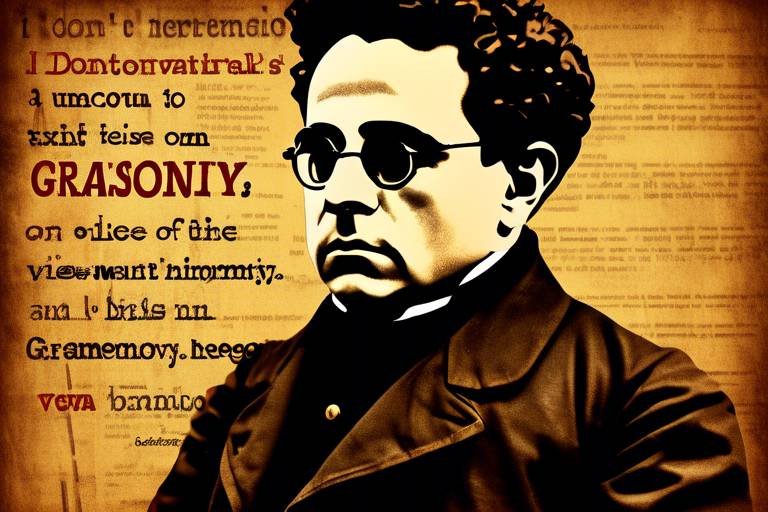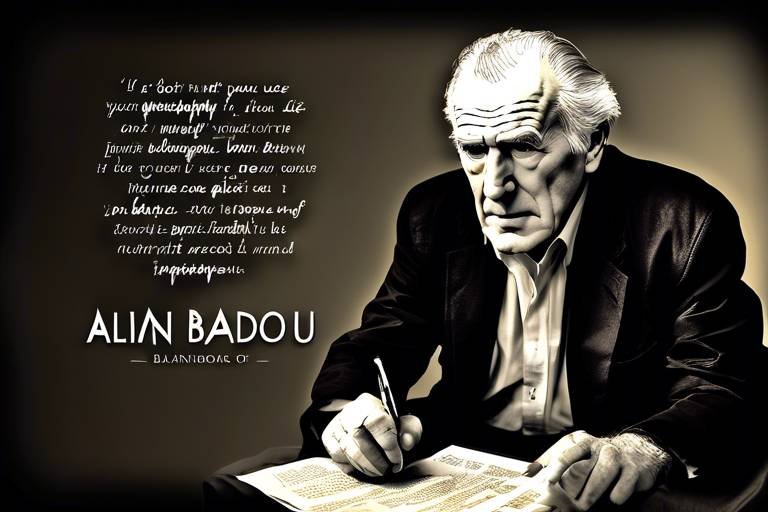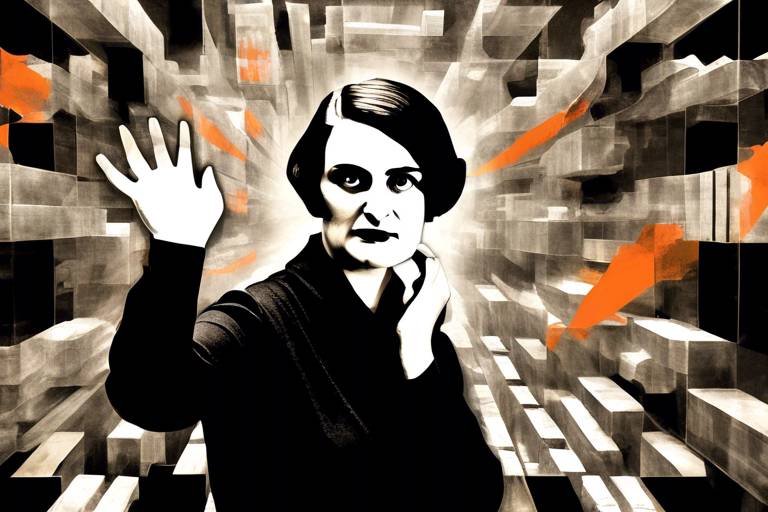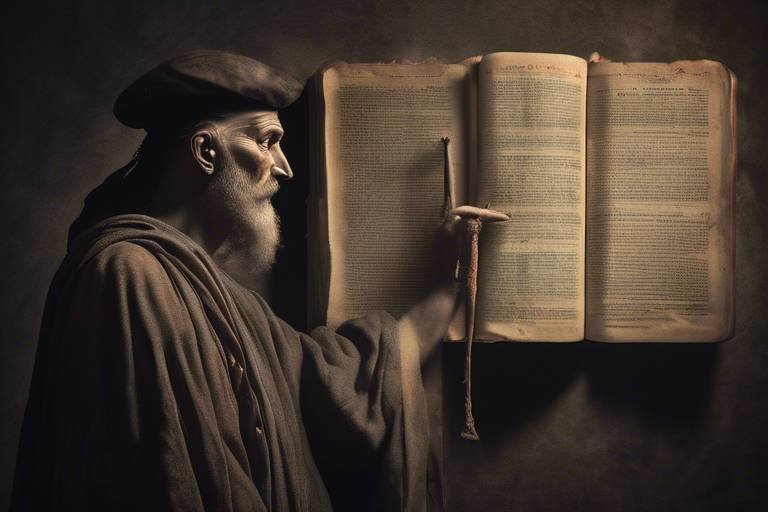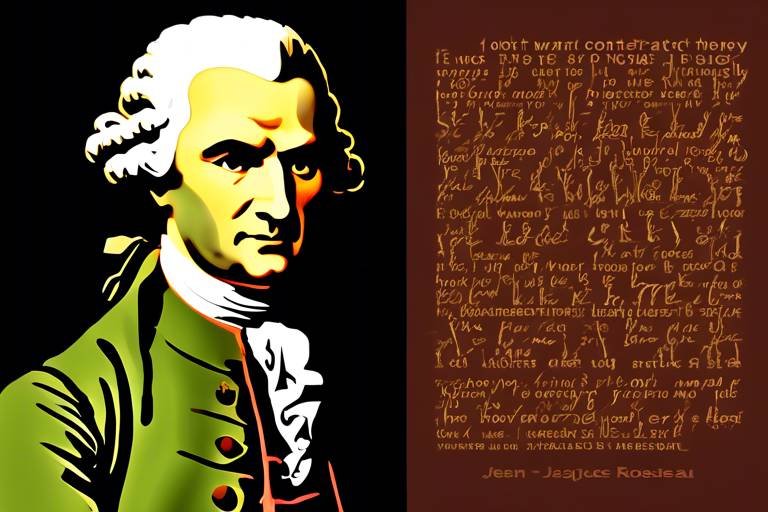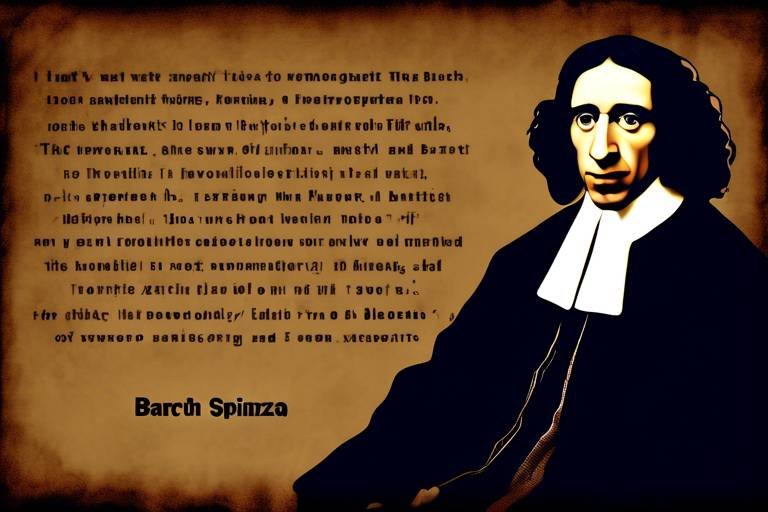The Basic Tenets of Marxist-Leninist Philosophy
Marxist-Leninist philosophy is not just a collection of ideas; it is a dynamic framework that seeks to understand and transform the world. Rooted in the works of Karl Marx and later expanded by Vladimir Lenin, this philosophy emerged as a response to the social injustices and economic inequalities of the 19th and early 20th centuries. Its foundational principles are essential for anyone looking to grasp the complexities of modern political theory and practice. By exploring the historical context, key concepts, and implications of Marxist-Leninism, we can unlock a deeper understanding of its relevance today.
Understanding the historical backdrop of Marxist-Leninist philosophy is crucial. In the 19th century, Europe was undergoing massive transformations due to industrialization. The rise of factories and urban centers led to a new social dynamic, where the working class, or proletariat, began to emerge as a distinct social group. This period was marked by stark contrasts between the wealthy bourgeoisie, who owned the means of production, and the impoverished workers, who sold their labor for survival. The social upheaval, combined with the philosophical ideas of thinkers like Hegel and Feuerbach, set the stage for Marx's revolutionary ideas. The socio-political conditions of this era created fertile ground for Marxist-Leninist thought to take root, aiming to address the injustices faced by the working class and envisioning a society free from exploitation.
At the heart of Marxist-Leninist philosophy are several key concepts that provide a lens through which societal development can be understood. These concepts include class struggle, historical materialism, and the dictatorship of the proletariat. Each of these ideas interconnects to form a comprehensive understanding of human society and its evolution over time. By delving into these concepts, we can better appreciate the revolutionary potential that Marxist-Leninist philosophy holds.
Class struggle is central to Marxist-Leninist thought, serving as the engine of historical change. It refers to the ongoing conflict between different social classes, primarily the proletariat and the bourgeoisie. This struggle is not merely a historical phenomenon; it is an inherent aspect of societal development. The tension between these classes drives social progress and can lead to revolutionary movements. For instance, as the proletariat becomes increasingly aware of their exploitation, they may mobilize for change, challenging the status quo. This dynamic is akin to a pressure cooker; the more the pressure builds, the more likely it is to explode, leading to significant societal shifts.
The relationship between the proletariat and bourgeoisie is fundamental to understanding class struggle. The bourgeoisie, who control the means of production, seek to maintain their power and wealth, often at the expense of the working class. Conversely, the proletariat, who rely on selling their labor, strive for better conditions and rights. This opposition is not just a matter of economic interests; it is a clash of ideologies and aspirations. The historical changes brought about by this conflict have shaped societies across the globe, leading to revolutions and the establishment of new political systems.
Revolutionary consciousness among the working class is essential for social change. It refers to the awareness that workers develop regarding their exploitation and the need for collective action. When individuals recognize their shared struggles and unite for a common cause, they can challenge the existing power structures. Think of it as a group of people realizing they are all trapped in the same room; once they recognize their shared predicament, they can work together to find a way out. This consciousness is not just about understanding one's conditions; it is about mobilizing that understanding into meaningful action.
Historical materialism is a methodological approach in Marxist-Leninist philosophy that analyzes societal development through material conditions and economic factors. It posits that the economic base of society shapes its political and ideological superstructure. In simpler terms, the way goods are produced and distributed influences everything from laws to culture. By examining history through this lens, we can see that changes in technology, labor relations, and economic systems are fundamental to understanding societal evolution. This perspective challenges us to consider how material conditions affect our lives and the structures we inhabit.
The dictatorship of the proletariat is a key element of Marxist-Leninist theory, representing a transitional state towards a classless society. It is not about oppression; rather, it is about the working class gaining control of the state apparatus to dismantle the structures of capitalism. This phase is crucial for implementing policies that benefit the majority rather than a privileged few. The dictatorship of the proletariat serves as a means to eradicate exploitation and pave the way for a more equitable society.
The transition to communism involves dismantling capitalist structures and establishing a society where resources are shared equitably. The dictatorship of the proletariat plays a pivotal role in this process, as it seeks to empower the working class and eliminate class distinctions. This transition is akin to transforming a caterpillar into a butterfly; it requires significant changes and a period of metamorphosis. As the old structures are dismantled, new forms of social organization can emerge, ultimately leading to a classless society.
Despite its revolutionary potential, Marxist-Leninist philosophy faces various critiques and challenges. Critics often argue that the implementation of these ideas has led to authoritarian regimes rather than true liberation. However, Marxist-Leninist theorists respond by emphasizing the importance of context and the need for genuine revolutionary consciousness among the masses. They contend that the failures of certain regimes do not negate the validity of the philosophy itself. Instead, they highlight the ongoing struggle for social justice and the need to adapt Marxist-Leninist principles to contemporary conditions.
- What is Marxist-Leninism? A political ideology that combines the ideas of Karl Marx and Vladimir Lenin, focusing on class struggle and the establishment of a classless society.
- How does class struggle influence society? Class struggle drives historical change by highlighting the conflicts between different social classes, leading to revolutionary movements.
- What is historical materialism? A methodological approach that analyzes societal development through material conditions and economic factors.
- What is the dictatorship of the proletariat? A transitional state where the working class gains control of the state to dismantle capitalist structures and implement social change.
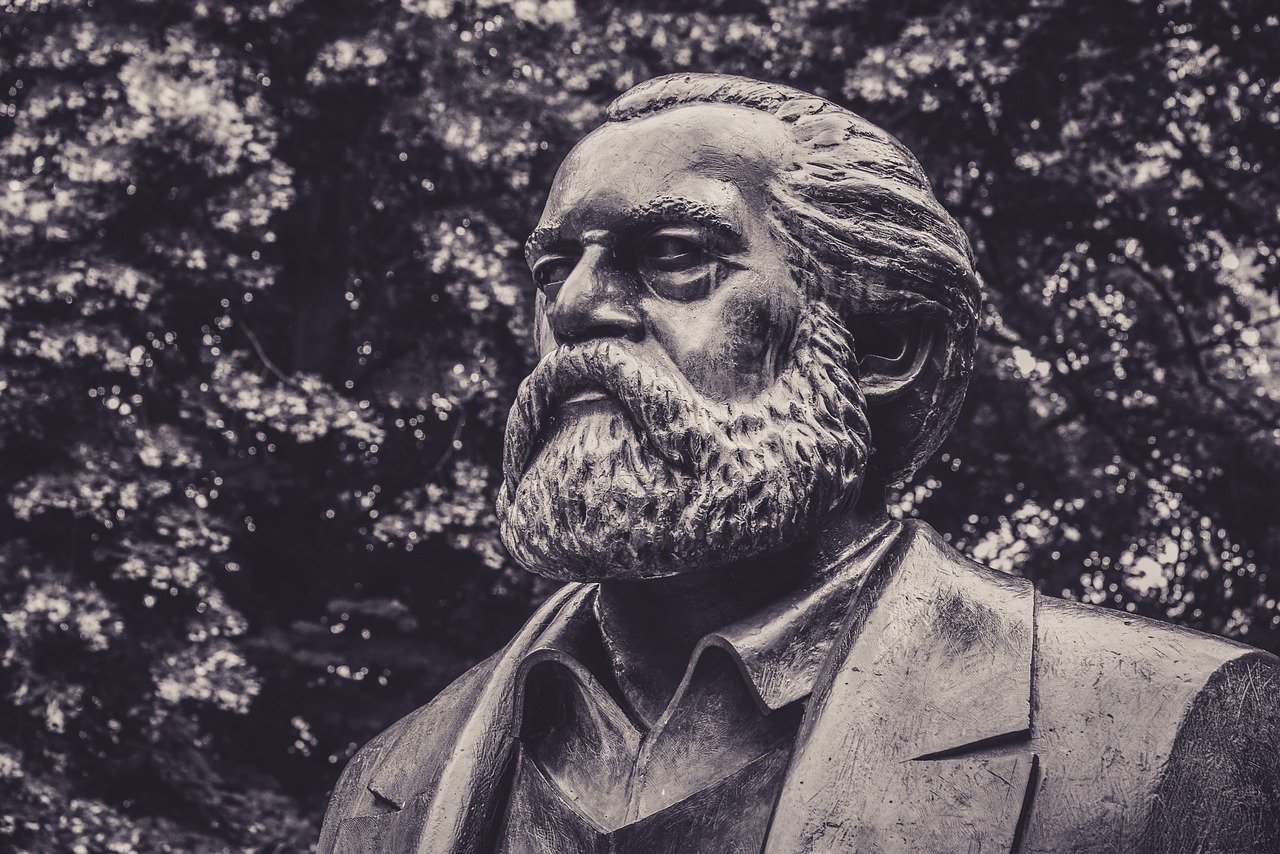
Historical Context
Understanding the historical backdrop of Marxist-Leninist philosophy is crucial for grasping its significance and evolution. This philosophy emerged during a time of profound social upheaval, particularly in the 19th century, when the Industrial Revolution was reshaping economies and societies across Europe. The rapid urbanization and the rise of factories created a stark divide between the wealthy bourgeoisie and the impoverished proletariat. This economic disparity fueled discontent and laid the groundwork for revolutionary ideas.
As the bourgeois class amassed wealth and power, the working class found itself increasingly marginalized. The working conditions in factories were often deplorable, with long hours, low wages, and unsafe environments. This environment of struggle and inequality prompted thinkers like Karl Marx and Friedrich Engels to analyze the socio-economic structures at play, leading to the development of their revolutionary theories. The publication of the Communist Manifesto in 1848 marked a pivotal moment, calling for the working class to rise against their oppressors and highlighting the necessity of class struggle.
By the early 20th century, Marxist-Leninist ideas were gaining traction, particularly in Russia, where the socio-political climate was ripe for change. The dissatisfaction with the Tsarist regime, compounded by military failures and economic hardship, created a fertile ground for revolutionary thought. The Russian Revolution of 1917 was a significant turning point, as it demonstrated the potential of Marxist-Leninist principles in practice. Under the leadership of Vladimir Lenin, the Bolsheviks successfully overthrew the provisional government, establishing the world's first socialist state.
This historical context is essential for understanding how Marxist-Leninist philosophy not only critiques capitalism but also proposes a radical alternative. The socio-economic conditions of the time were not merely background noise; they were the very catalysts that propelled these ideas into the forefront of political discourse. The struggles faced by the proletariat were not isolated incidents but part of a larger narrative that Marx and Lenin sought to address through their revolutionary frameworks.
To further illustrate the impact of these historical events, consider the following table that outlines key milestones in the development of Marxist-Leninist thought:
| Year | Event | Significance |
|---|---|---|
| 1848 | Publication of the Communist Manifesto | Call to arms for the working class, outlining the principles of communism. |
| 1917 | Russian Revolution | Establishment of the first socialist state, demonstrating the application of Marxist-Leninist theory. |
| 1924 | Death of Lenin | Power struggles within the Communist Party lead to the rise of Stalin and changes in Marxist-Leninist practice. |
The of Marxist-Leninist philosophy is not just a backdrop; it is an integral part of its identity. By examining the socio-political conditions that gave rise to these ideas, we can better appreciate their implications and the ongoing relevance of Marxist-Leninist thought in contemporary political discourse.
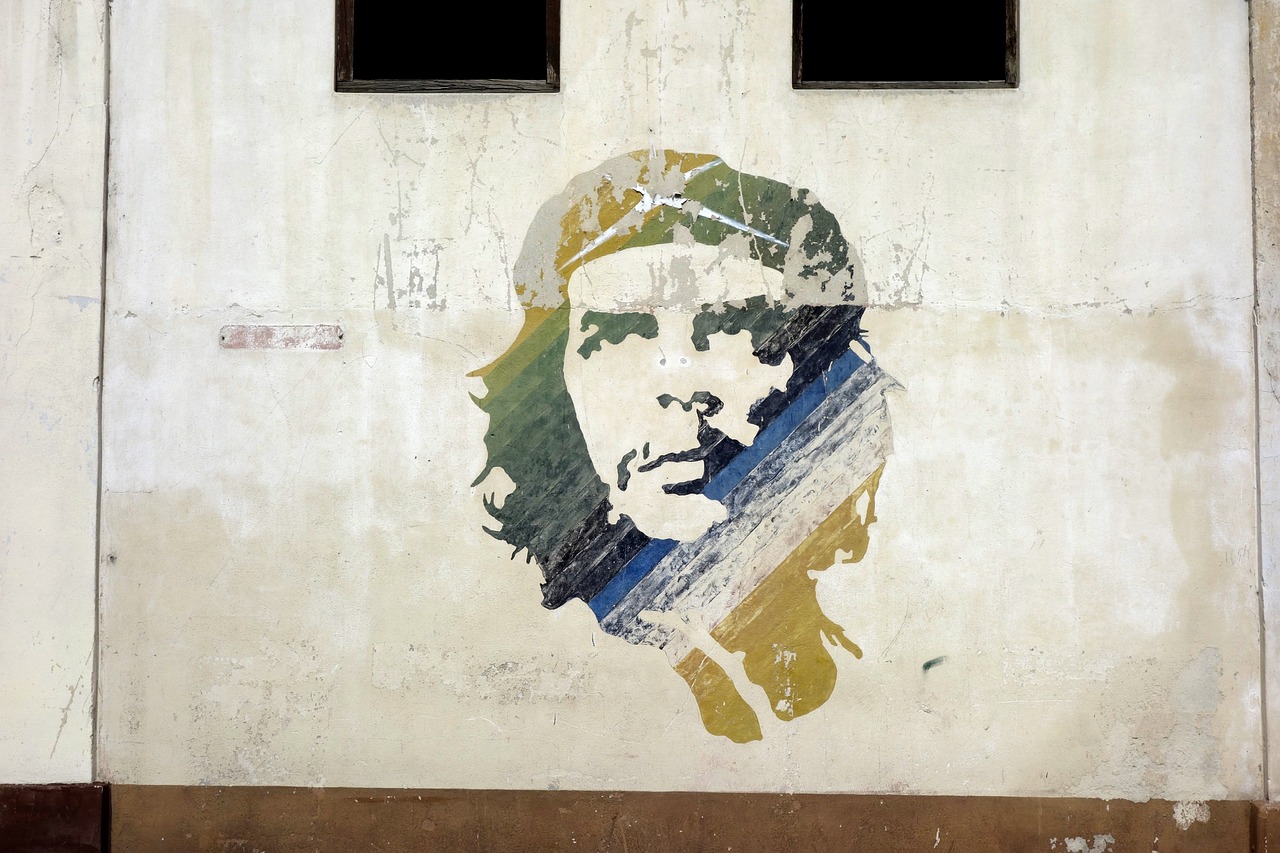
Key Concepts
Marxist-Leninist philosophy is a rich tapestry woven from several key concepts that serve as its foundation. These concepts not only provide a framework for understanding the world but also guide the actions of those who subscribe to this ideology. At its core, Marxist-Leninism seeks to analyze the dynamics of society through the lenses of class struggle, historical materialism, and the dictatorship of the proletariat. Each of these ideas plays a critical role in shaping the political landscape and offers insights into the mechanisms of social change.
One of the most significant ideas within Marxist-Leninist philosophy is the concept of class struggle. This principle posits that history is driven by the conflicts between different social classes, primarily the proletariat (working class) and the bourgeoisie (capitalist class). The notion of class struggle is not merely an abstract theory; it is a lived reality for many people who experience the tensions and inequalities inherent in capitalist systems. For instance, consider the struggles of workers fighting for better wages and working conditions against corporate interests that prioritize profit over people. This ongoing conflict is what Marxist-Leninists believe propels society forward, leading to inevitable changes and revolutions.
At the heart of class struggle lies the relationship between the proletariat and the bourgeoisie. This dynamic is fundamental to understanding how societal change occurs. The bourgeoisie, who own the means of production, seek to maintain their power and wealth, often at the expense of the proletariat, who sell their labor for survival. This antagonistic relationship creates a fertile ground for revolutionary movements, as the proletariat becomes increasingly aware of their exploitation. The struggle for liberation from capitalist oppression is not just a political endeavor; it is a profound social awakening that can lead to a collective consciousness among the working class.
The dichotomy between the proletariat and bourgeoisie can be likened to a game of tug-of-war, where each side pulls with all its might. The bourgeoisie, equipped with resources and power, often appears to have the upper hand. However, the proletariat, when united and conscious of their collective strength, can turn the tide. This dynamic illustrates the potential for revolutionary change, as the oppressed rise against their oppressors. The history of revolutions around the world serves as testament to this struggle, highlighting how the oppressed can overthrow systems that seek to keep them subjugated.
Building on the idea of class struggle is the notion of revolutionary consciousness. This concept emphasizes the importance of awareness among the working class regarding their social and economic conditions. It's not enough for workers to simply feel the weight of their oppression; they must also understand the systemic forces at play. This awareness can ignite a fire of collective action, leading to organized movements that challenge the status quo. When the proletariat recognizes their power, they can mobilize to demand change, much like a river that breaks through a dam, carving a new path toward freedom and equality.
Another cornerstone of Marxist-Leninist philosophy is historical materialism. This methodological approach asserts that material conditions and economic factors are the primary drivers of societal development. Rather than viewing history as a series of isolated events, historical materialism analyzes how economic systems shape social structures and cultural practices. For example, the transition from feudalism to capitalism fundamentally altered the fabric of society, leading to new class relations and power dynamics. Understanding this framework allows us to see the interconnectedness of various historical phenomena and the role of economic forces in shaping human experiences.
In summary, the key concepts of Marxist-Leninist philosophy—class struggle, revolutionary consciousness, and historical materialism—offer profound insights into the nature of society and the potential for change. By examining these ideas, we can better understand the motivations behind political movements and the ongoing quest for a more equitable world.
- What is the main goal of Marxist-Leninist philosophy?
Marxist-Leninist philosophy aims to analyze and change society by addressing the inequalities created by capitalism, ultimately seeking to establish a classless society. - How does class struggle manifest in modern society?
Class struggle can be seen in various forms, such as labor strikes, protests for social justice, and movements advocating for workers' rights against corporate interests. - What role does revolutionary consciousness play in social movements?
Revolutionary consciousness is crucial as it empowers the working class to recognize their exploitation and motivates them to organize for change.

Class Struggle
The concept of lies at the very heart of Marxist-Leninist philosophy, serving as a lens through which we can understand the dynamics of societal change. Imagine a tug-of-war, where two opposing teams represent different social classes, each pulling in their own direction. On one side, we have the proletariat, or the working class, who sell their labor for wages, and on the other, the bourgeoisie, the capitalist class that owns the means of production. This ongoing conflict is not merely a backdrop but a driving force behind historical development and social transformation.
At its core, class struggle encapsulates the idea that societal progress is often birthed from conflict. As the proletariat becomes increasingly aware of their exploitation, they begin to mobilize, challenging the status quo. This awareness is not just a passive recognition; it is a revolutionary consciousness that inspires collective action. Think of it as a seed planted in fertile soil. With the right conditions—such as economic hardship, political repression, or social injustice—this seed can grow into a powerful movement for change.
Throughout history, we can observe numerous examples of class struggle manifesting in various forms. From the French Revolution to the Russian Revolution, the struggles of the working class have often led to significant political upheaval. These events highlight the reality that when the oppressed rise up against their oppressors, they can reshape their societies. The is not just a historical phenomenon; it is an ongoing process that continues to evolve in contemporary society.
To better understand the implications of class struggle, let's consider some key points:
- Historical Significance: Class struggle has been a catalyst for many major political revolutions throughout history.
- Awareness and Mobilization: The proletariat's awareness of their exploitation is crucial for initiating change.
- Continued Relevance: Class struggle remains relevant today, influencing labor movements and social justice causes.
In essence, the idea of class struggle is not confined to a specific time or place; it is a universal phenomenon that transcends borders and epochs. As we navigate the complexities of modern capitalism, the lessons from Marxist-Leninist philosophy remind us that the struggle between classes is an inherent part of our social fabric. Understanding this struggle equips us with the tools to analyze not only past events but also contemporary issues, empowering us to envision a future where equity and justice can prevail.
1. What is class struggle?
Class struggle refers to the conflict between different classes in society, primarily between the proletariat (working class) and the bourgeoisie (capitalist class). It is seen as a driving force behind social and political change.
2. How does class struggle lead to social change?
As the working class becomes aware of their exploitation and unites, they can challenge the existing power structures, leading to revolutions and significant societal transformations.
3. Is class struggle still relevant today?
Yes, class struggle remains relevant as issues of economic inequality, labor rights, and social justice continue to be prominent in contemporary discussions and movements.

Proletariat vs. Bourgeoisie
The relationship between the proletariat and the bourgeoisie is at the heart of Marxist-Leninist philosophy, acting as a catalyst for historical change and revolution. To put it simply, the proletariat represents the working class—the individuals who sell their labor to survive—while the bourgeoisie consists of the owners of the means of production, such as factories, land, and resources. This inherent conflict between these two classes is often likened to a never-ending tug-of-war, where the interests of one side directly oppose the interests of the other. As the bourgeoisie seeks to maximize profits, they often exploit the proletariat, leading to a cycle of oppression that fuels discontent and unrest.
In the grand scheme of societal development, this class struggle is not just a backdrop; it's a driving force. The proletariat, burdened by the weight of exploitation, gradually awakens to its plight. This awakening is crucial; it’s where the seeds of revolutionary consciousness are sown. Just as a pot of water gradually heats up until it boils, the proletariat's awareness of their exploitation builds until it reaches a breaking point, leading to collective action against bourgeois domination.
Let’s break down some of the key dynamics between the proletariat and the bourgeoisie:
- Economic Power: The bourgeoisie controls the wealth and resources, while the proletariat relies on wages for survival, creating a power imbalance.
- Political Influence: The bourgeoisie often wields significant political influence, shaping laws and policies that protect their interests, whereas the proletariat struggles for representation.
- Social Class Awareness: The proletariat's awareness of their exploitation can lead to solidarity and collective action, challenging the status quo.
This conflict is not merely theoretical; it manifests in various forms of struggle, from labor strikes to political movements. The proletariat’s ability to organize and mobilize is essential for challenging the bourgeoisie’s dominance. As history has shown, when the working class becomes aware of their collective power, significant social transformations can occur. The revolutions of the 19th and 20th centuries serve as prime examples of how the struggle between these two classes can lead to profound changes in societal structures.
In conclusion, the dynamic between the proletariat and the bourgeoisie is more than just a conflict; it's a pivotal element of Marxist-Leninist philosophy that underscores the necessity of class struggle in the quest for a more equitable society. Understanding this relationship helps us grasp the broader implications of Marxist-Leninist thought and its relevance in contemporary discussions about class, power, and social justice.
- What is the proletariat? The proletariat refers to the working class who do not own the means of production and must sell their labor to survive.
- Who are the bourgeoisie? The bourgeoisie are the capital-owning class who control the means of production and profit from the labor of the proletariat.
- Why is the conflict between these classes important? This conflict drives historical change and social evolution, highlighting the struggles for power and equity in society.
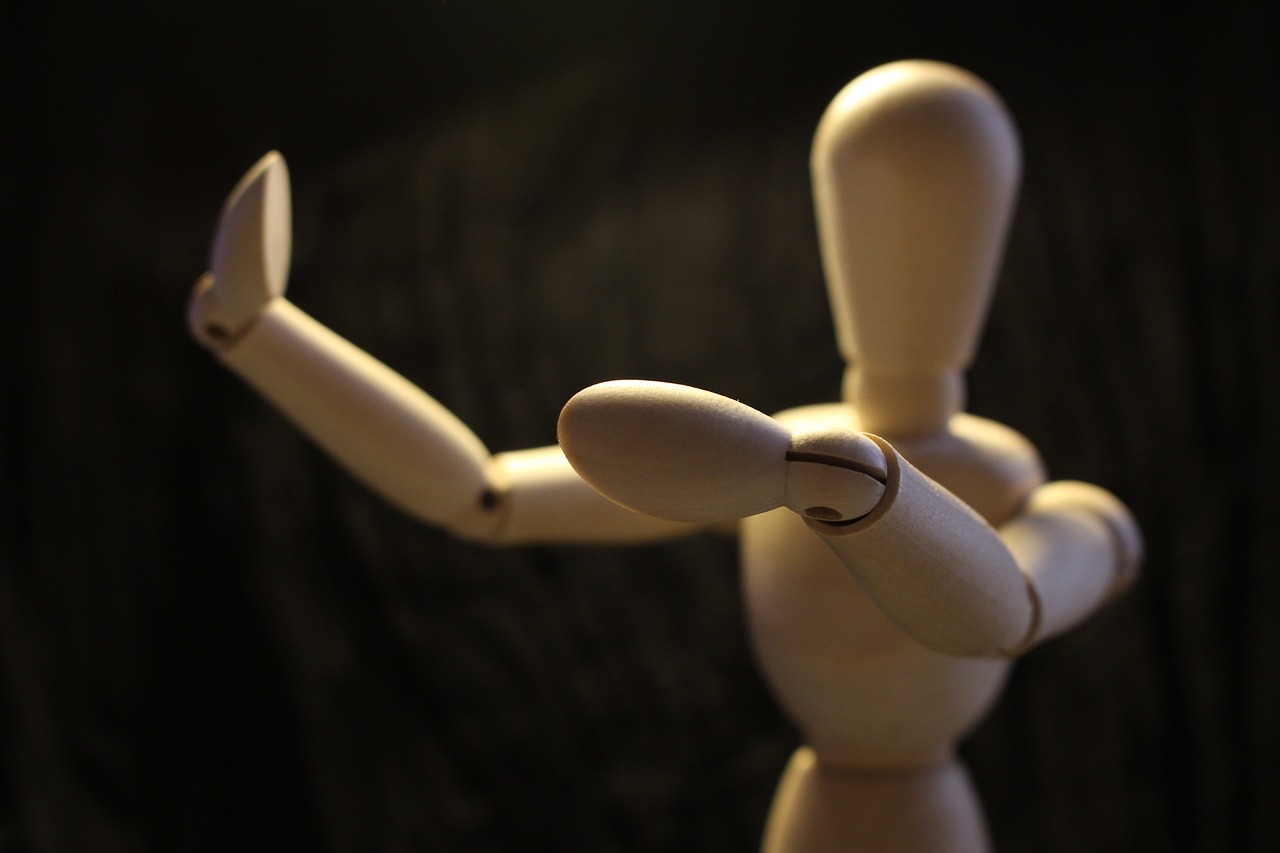
Revolutionary Consciousness
Revolutionary consciousness is a pivotal concept within Marxist-Leninist philosophy, acting as the catalyst for social change. It refers to the awareness and understanding among the working class regarding their exploitation and the systemic injustices they face. When workers recognize their shared struggles against the oppressive structures of capitalism, they begin to develop a collective identity that transcends individual hardships. This awakening is not merely an intellectual exercise; it is a profound shift in perception that empowers individuals to act collectively for their rights and for the overthrow of the capitalist system.
Imagine a group of people trapped in a dark room, unaware that the door is unlocked. Each person feels isolated in their struggles, believing they are alone in their plight. However, once they start to communicate, sharing their experiences and frustrations, they realize they are all facing the same barriers. This newfound understanding can spark a revolutionary spirit, igniting a desire for change. In the context of Marxist-Leninist thought, this is precisely what revolutionary consciousness aims to achieve—transforming individual grievances into a unified movement for collective liberation.
For revolutionary consciousness to flourish, several key factors must be present:
- Education: Workers must be educated about their rights, the nature of class struggle, and the historical context of their oppression. This education can come from various sources, including grassroots organizations, unions, and revolutionary literature.
- Solidarity: Building solidarity among workers is essential. When individuals see their struggles as interconnected, they are more likely to engage in collective action. Solidarity can manifest in numerous ways, from participating in strikes to organizing community support networks.
- Leadership: Effective leadership is crucial in guiding the working class towards revolutionary consciousness. Leaders must be able to articulate the vision for a classless society and inspire others to join the movement.
Moreover, revolutionary consciousness is not static; it evolves as conditions change. As workers encounter new challenges, their understanding of their situation deepens, leading to more sophisticated forms of resistance. This dynamic aspect of revolutionary consciousness means that it can adapt to different socio-political contexts, making it a living, breathing part of the struggle for social justice.
However, the path to achieving revolutionary consciousness is fraught with obstacles. The ruling class often employs various tactics to suppress awareness and maintain the status quo, including propaganda, misinformation, and even repression. This is where the role of revolutionary organizations becomes crucial. They must work tirelessly to counteract these forces, providing the necessary tools for workers to awaken to their revolutionary potential.
In conclusion, revolutionary consciousness is the bedrock upon which the Marxist-Leninist movement stands. It empowers the working class to rise against oppression, fostering a sense of unity and purpose. As individuals come together to acknowledge their struggles, they pave the way for transformative action that can lead to a more equitable society. The journey towards revolutionary consciousness may be challenging, but it is an essential step in the fight for a better world.
- What is revolutionary consciousness?
Revolutionary consciousness refers to the awareness among the working class of their collective struggles against capitalism and their potential for social change. - Why is education important for revolutionary consciousness?
Education helps workers understand their rights and the nature of their oppression, empowering them to take collective action. - How can solidarity among workers be fostered?
Solidarity can be built through grassroots organizing, community support networks, and shared experiences in the struggle against exploitation.
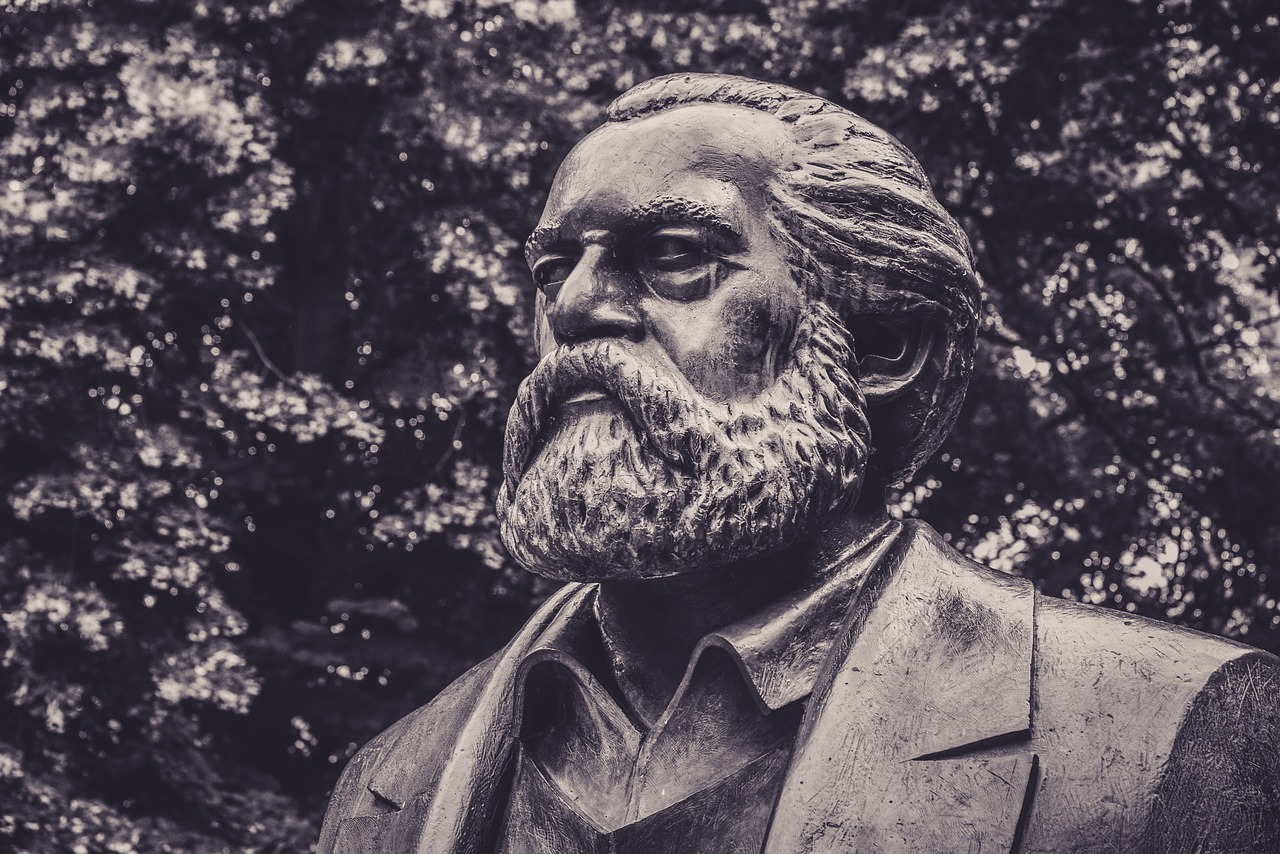
Historical Materialism
Historical materialism serves as a cornerstone of Marxist-Leninist philosophy, offering a unique lens through which to analyze societal evolution. At its core, this approach posits that the material conditions of a society—namely, its economic structure—are the primary drivers of historical development. Instead of viewing history as a series of isolated events or the whims of great individuals, historical materialism emphasizes the interconnectedness of economic factors and social relations. This perspective helps us understand that human societies progress through distinct stages, shaped by the modes of production and the class relations inherent in each stage.
To grasp historical materialism fully, it’s essential to consider the following key points:
- Material Conditions Matter: The way people produce and reproduce their lives fundamentally influences their social structures and political institutions.
- Class Relations: The conflict between different social classes, primarily the bourgeoisie and the proletariat, emerges from these material conditions and drives historical change.
- Dialectical Method: Historical materialism employs a dialectical approach, focusing on contradictions within society that lead to transformation and development.
By applying historical materialism, we can analyze various historical events and understand them in a broader context. For instance, the Industrial Revolution didn’t just happen in a vacuum; it was a result of changing material conditions and class relations. The transition from feudalism to capitalism was not merely a shift in economic systems but a profound transformation in the way people interacted with each other and their environment. This approach allows us to see history as a dynamic process, where economic and social factors are in constant interplay, leading to shifts in power and societal organization.
Moreover, historical materialism is not static; it evolves as new material conditions arise. This adaptability makes it a powerful tool for understanding contemporary issues. For example, in the face of globalization and technological advancements, historical materialism can help us analyze how these changes affect class structures and social relations today. By recognizing the ongoing influence of economic factors on social dynamics, we can better comprehend current struggles and movements within society.
In summary, historical materialism provides a comprehensive framework for examining the complexities of societal development. It challenges us to look beyond surface-level events and consider the deeper economic and social forces at play. By doing so, we gain valuable insights into the past, present, and potential future trajectories of human societies.

Dictatorship of the Proletariat
The concept of the is a cornerstone of Marxist-Leninist philosophy, representing a critical phase in the transition from capitalism to communism. This idea is not about a tyrannical rule by a single leader, but rather a collective governance by the working class aimed at dismantling the structures of capitalism. Imagine a ship navigating through turbulent waters; the dictatorship of the proletariat serves as the captain steering towards a safer harbor, ensuring that the interests of the majority—the workers—are prioritized over the privileged few.
At its core, the dictatorship of the proletariat is seen as a necessary state that emerges after a revolution, where the working class gains control of political power. This transitional state is crucial for several reasons:
- Consolidation of Power: It allows the proletariat to consolidate power and dismantle the existing bourgeois state apparatus.
- Suppression of Counter-Revolution: This phase helps in suppressing counter-revolutionary forces that seek to restore capitalism.
- Implementation of Socialist Policies: It provides the means to implement policies that favor the working class and redistribute wealth.
Critics often misinterpret this concept, equating it with authoritarianism. However, Marxist-Leninists argue that the dictatorship of the proletariat is fundamentally about democratic control by the working masses. It's a period where the proletariat actively participates in governance, shaping policies that reflect their needs and aspirations. Think of it as a team sport, where every player (worker) has a say in the game plan, ensuring that the goals align with the collective interest.
In practice, the dictatorship of the proletariat aims to establish a classless society by eradicating the economic and social inequalities fostered by capitalism. This involves a series of transformative actions, including:
| Action | Description |
|---|---|
| Nationalization | Taking control of major industries and resources to ensure they serve the public good. |
| Land Reform | Redistributing land from wealthy landowners to the working class and peasants. |
| Education and Awareness | Promoting class consciousness among the proletariat to foster solidarity and collective action. |
Ultimately, the dictatorship of the proletariat is envisioned as a temporary state. As society progresses towards communism—where class distinctions cease to exist and resources are shared equitably—this dictatorship will wither away. The end goal is a society where the state itself becomes unnecessary, akin to a caterpillar transforming into a butterfly, shedding its former self to embrace a new, liberated existence.
In conclusion, understanding the dictatorship of the proletariat is essential for grasping the broader implications of Marxist-Leninist theory. It represents not just a political strategy, but a profound commitment to achieving social justice and equality. As we navigate the complexities of modern political discourse, this concept challenges us to rethink power dynamics and the role of the working class in shaping a fairer society.
Q1: What is the dictatorship of the proletariat?
A1: It is a transitional state in Marxist-Leninist theory where the working class holds political power to dismantle capitalism and establish socialism.
Q2: Is the dictatorship of the proletariat the same as a dictatorship?
A2: No, it refers to collective governance by the working class, not the rule of a single individual or a small group.
Q3: How long does the dictatorship of the proletariat last?
A3: It is intended as a temporary phase that will eventually wither away as society transitions to a classless, stateless communist society.
Q4: What are the main goals of the dictatorship of the proletariat?
A4: Its primary goals include consolidating power for the working class, suppressing counter-revolutionary forces, and implementing socialist policies.
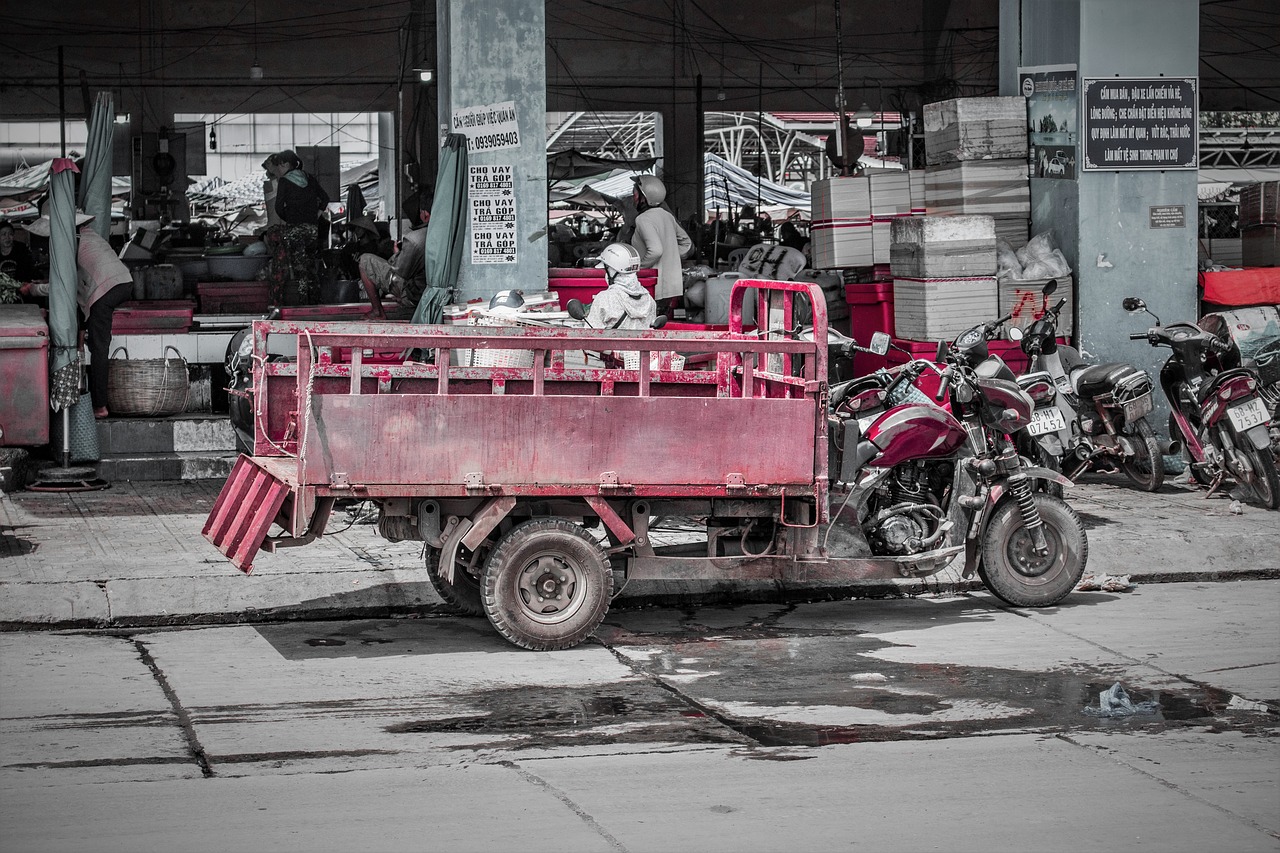
Transition to Communism
The transition to communism is not merely a theoretical concept but a profound transformation that seeks to dismantle the existing capitalist structures and replace them with a system that prioritizes collective ownership and social welfare. Imagine a world where the fruits of labor are shared among all, rather than hoarded by a privileged few. This vision is at the heart of Marxist-Leninist philosophy and serves as a guiding principle for revolutionary movements. The process of this transition is complex and fraught with challenges, yet it remains a critical objective for those who aspire to create a classless society.
At the core of this transition is the dictatorship of the proletariat, which acts as a temporary state mechanism designed to suppress the bourgeoisie and prevent the resurgence of capitalist practices. This phase is essential because it allows the working class to consolidate power and implement reforms that will lay the groundwork for a communist society. During this period, the state plays a crucial role in redistributing resources, nationalizing key industries, and ensuring that the needs of the people are met. Without this transitional phase, the revolutionary gains could easily be undermined by counter-revolutionary forces.
To better understand the transition, consider the following key aspects:
- Economic Reorganization: This involves restructuring the economy to eliminate private property and promote collective ownership. Industries that were once profit-driven become tools for meeting the needs of society.
- Social Reforms: Education, healthcare, and social services are transformed to ensure equitable access for all. The aim is to eradicate inequalities that have persisted under capitalism.
- Political Empowerment: The working class must be politically educated and organized to maintain control over the state apparatus. This empowerment is crucial for preventing the emergence of new ruling classes.
While the transition to communism is envisioned as a linear progression, history has shown that it can be unpredictable. Various factors, including external pressures and internal dissent, can complicate this journey. For instance, the experiences of countries that have attempted to implement Marxist-Leninist principles reveal both successes and failures. These historical examples underscore the importance of adaptability and the need for a strong revolutionary consciousness among the masses.
Ultimately, the transition to communism is not just about changing economic systems; it's about fundamentally altering the way society operates. It challenges individuals to rethink their relationship with work, community, and governance. The goal is to create a society where everyone contributes according to their ability and receives according to their needs. This radical shift requires not only political will but also a deep-seated commitment to solidarity and cooperation among all members of society.
In conclusion, the transition to communism represents a significant and ambitious endeavor that seeks to create a more equitable world. While the path may be fraught with obstacles, the vision of a classless society continues to inspire countless individuals and movements around the globe. As we reflect on this journey, it's essential to remember that the struggle for a just society is ongoing, and each step taken towards this goal is a testament to the enduring spirit of the proletariat.
- What is the dictatorship of the proletariat? The dictatorship of the proletariat is a temporary state form where the working class holds political power to suppress the bourgeoisie and implement socialist reforms.
- How does the transition to communism affect individual freedoms? While the transition may limit certain capitalist freedoms, it aims to enhance collective freedoms by ensuring that basic needs are met for all individuals.
- Can the transition to communism succeed without a revolution? Many Marxist-Leninists believe that a revolution is necessary to dismantle existing capitalist structures, although some advocate for gradual reforms.

Critiques and Challenges
Marxist-Leninist philosophy, despite its profound influence on political thought and practice, is not without its critiques and challenges. Critics often argue that the implementation of Marxist-Leninist principles in various states has led to authoritarian regimes rather than the liberating outcomes envisioned by Marx and Lenin. This paradox raises significant questions about the practicality of the theory itself. For instance, how can a philosophy that advocates for the empowerment of the proletariat result in the suppression of individual freedoms? This contradiction is at the heart of many critiques.
One of the most prominent challenges is the issue of authoritarianism. Many argue that the concept of the "dictatorship of the proletariat" has been misinterpreted as a justification for oppressive governance. In practice, regimes claiming to follow Marxist-Leninist principles have often concentrated power in the hands of a few, leading to bureaucratic elitism and a disconnect from the very working class they profess to represent. This has sparked debates about whether true Marxist-Leninism can exist in a non-authoritarian form.
Another critique revolves around the concept of historical materialism. Detractors claim that this approach oversimplifies complex social dynamics by attributing societal changes solely to economic factors. Critics argue that it neglects the roles of culture, ideology, and individual agency in shaping historical events. For instance, can we truly understand the rise of social movements without considering the cultural narratives that inspire them? This question highlights a significant limitation in the Marxist-Leninist framework.
Moreover, the idea of class struggle is often challenged for its binary perspective on society. Critics argue that reducing social dynamics to a struggle between the proletariat and bourgeoisie overlooks the nuances of class stratification. In modern societies, class is not merely defined by ownership of production means; it encompasses a range of factors including education, race, and geographic location. This complexity calls into question the applicability of Marxist-Leninist analysis in contemporary contexts.
In response to these critiques, Marxist-Leninist theorists have sought to adapt and reinterpret the philosophy to address its shortcomings. They argue that the failures of certain regimes do not reflect the inherent flaws of Marxist-Leninism itself, but rather the misapplication of its principles. This raises an important point: can a theory be held accountable for the actions of its practitioners? The debate continues, with many advocating for a re-examination of Marxist-Leninist tenets in light of modern realities.
To further illustrate the critiques and challenges faced by Marxist-Leninist philosophy, we can summarize some of the key points in the table below:
| Critique | Description |
|---|---|
| Authoritarianism | Claims of representing the proletariat have led to oppressive regimes. |
| Oversimplification | Historical materialism is criticized for neglecting cultural and ideological factors. |
| Class Dynamics | The binary view of class struggle overlooks modern class complexities. |
| Misapplication | Failures of regimes are seen as misapplications rather than flaws in theory. |
In conclusion, while Marxist-Leninist philosophy has significantly shaped political discourse, it must contend with a variety of critiques that challenge its relevance and application in today's world. The ongoing dialogue surrounding these critiques not only enriches our understanding of Marxist-Leninism but also encourages a deeper exploration of alternative political theories and practices.
- What is Marxist-Leninist philosophy? - It is a political theory that combines the ideas of Karl Marx and Vladimir Lenin, focusing on class struggle and the role of the proletariat in achieving a classless society.
- What are the main critiques of Marxist-Leninism? - Critics point to authoritarianism, oversimplification of social dynamics, and the binary view of class struggle as major challenges.
- Can Marxist-Leninism exist without authoritarianism? - This is a contentious debate, with some theorists advocating for a re-examination of its principles to align with democratic ideals.
Frequently Asked Questions
- What is Marxist-Leninist philosophy?
Marxist-Leninist philosophy is a political and economic theory that combines the ideas of Karl Marx and Vladimir Lenin. It emphasizes the role of class struggle in societal development and advocates for a revolutionary transition from capitalism to communism.
- How did historical context influence Marxist-Leninist philosophy?
The emergence of Marxist-Leninist philosophy was significantly shaped by the socio-political conditions of the 19th and early 20th centuries, including the rise of industrial capitalism, widespread poverty, and the growing discontent among the working class.
- What is class struggle, and why is it important?
Class struggle refers to the conflict between different social classes, primarily the proletariat (working class) and the bourgeoisie (capitalist class). It is a fundamental concept in Marxist-Leninist thought, as it drives historical change and revolution.
- Can you explain the relationship between the proletariat and bourgeoisie?
The proletariat and bourgeoisie have opposing interests; the bourgeoisie seeks to maintain their wealth and power, while the proletariat strives for better working conditions and equitable distribution of resources. Their conflict is central to the development of society.
- What is revolutionary consciousness?
Revolutionary consciousness refers to the awareness among the working class of their exploitation and the need for collective action to achieve social change. This consciousness is crucial for mobilizing the proletariat towards revolution.
- What is historical materialism?
Historical materialism is a methodological approach in Marxist-Leninist philosophy that analyzes societal development through material conditions and economic factors, emphasizing how these elements shape social structures and relationships.
- What does the dictatorship of the proletariat mean?
The dictatorship of the proletariat is a transitional state in Marxist-Leninist theory where the working class holds political power. It is seen as essential for dismantling capitalist structures and paving the way for a classless society.
- How does the transition to communism occur?
The transition to communism involves the gradual dismantling of capitalist structures through the establishment of the dictatorship of the proletariat, which aims to eliminate class distinctions and create a society based on collective ownership.
- What are some common critiques of Marxist-Leninist philosophy?
Critiques of Marxist-Leninist philosophy often focus on its perceived authoritarianism, economic inefficiencies, and historical failures in implementation. Critics argue that it can lead to oppressive regimes rather than the intended classless society.
- How do Marxist-Leninist theorists respond to these critiques?
Marxist-Leninist theorists often argue that failures in implementation are due to external pressures, such as imperialism and economic sanctions, rather than flaws in the philosophy itself. They emphasize the need for continued struggle and adaptation of Marxist principles to contemporary conditions.



